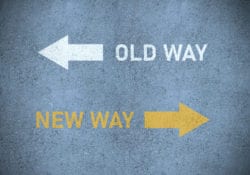Strong Point’s Leadership Rule #16: Develop Break-the-Mood Strategies and Tools
The pressure to perform, to produce, and to provide value to an employer, to a customer, to family, friends and community day-in and day-out, can draw down and drain our best intentions and efforts. Staying focused requires the consistent strength of discipline and power of will. No matter how masterful we are at self-regulation, feelings of fatigue and failure, inadequacy and unease predictably creep into our thoughts and conversations and can weaken the output of our work and our ability to perform and deliver. Our feelings and emotions, as well as those of our colleagues, are contagious, and so any dip into the negative can have incremental and compounding impacts on our performance and the performance of our peers, projects, and teams.
I recently read an article, dated February 2018, in Psychology Today called Hijacked No More. The article was written by Amy Alkon. Amy is an applied behavioral science author, speaker, and nationally known columnist. The article gave me comfort as I was reading Amy’s strategies for breaking the grip of bad moods that affect her ability to produce results. In her article, she reminds her readers that we all struggle with negative feelings and emotions as we work to maintain the value and deliver results in all aspects of our lives. She provides Dr. Suess-like simplicity for how the mind-body connection between emotions and feelings trigger subconscious behaviors and launch us into seemingly automatic responses that drive us right into the ditch of distraction. The article provides insights into breaking negative moods and gives guidance on how to move back into positive zones of productivity. The trick for flipping downer moods upward, she explains, lies in developing personal and “just-in-time” resilience tools. We can work to develop tools that break the link between emotions that are generated in our physical bodies, like sweaty palms or a racing heart, and feelings that live in our neural networks and cause the activation of worn-out thoughts that say things to us like, “You are definitely in trouble!” Her premise is that if we can learn to break the quick link between our emotions and the conditioned feelings that are patterned in our neural pathways, we can develop some fighting words and new thoughts that push-back against our own negativity and allow us to persist in our work and continue producing results. I love her written vignette called “Fight the Cower.” In it she says:
“The fear keeping you from going after what you want has a co-conspirator – your automatic behavior, such as your habits. Because neurons that fire together wire together, creating behavioral grooves, and all of your ducking instead of doing has turned your ducking into your thing. You have become predisposed to duck. The solution: Tell your feelings to beat it, and get on with whatever needs to be done.”
Another strategy she provides to break the habit of “awfulizing” and the resultant procrastination pattern that occurs when you flub an important presentation, is to lighten the self-recriminating back-lash and self-talk you unleash upon yourself by using a humbler, gentler internal messenger that reminds you that others make mistakes, fumble and falter every bit as much as you do. Amy says that making a simple statement to yourself such as: “Okay you blew it, but it’s still okay,” works better. Stating this pragmatic, matter-of-fact message, she explains, helps a person take responsibility for their less than desirable actions while still supporting their humanness in a way that promotes growth rather than prevents it. The critical count in maintaining performance is not how many times you get distracted or derailed or delayed, but how many more times you persist in the pursuit of results in the face of all those “D’s.”
An April 18, 2007 Knowledge @ Wharton article called “Managing Emotions in the Workplace: Do Positive and Negative Attitude Drive Performance? cites the work of Sigal Barsade, a Wharton Management Professor who has studied “Affect” (Affect is another word for Emotion), the influence of emotions in the workplace for over 15 years.
Sigal Barsade is quoted saying:
“We engage in emotional contagion,”…and
“Emotions travel from person to person like a virus.”
Barsade co-wrote another paper with Donald Gibson of Fairfield University called “Why Does Affect Matter in Organizations?” in which the authors tell us to think of people as “emotion conductors.” They explain that feelings are contagious and that there are three types of infectious feelings:

- Discrete, short-lived emotions
- – such as Joy, Anger, Fear, and Disgust Moods
- – such as feeling Excited, Happy, Down, or Frustrated Dispositional Personality Traits
- – such as Hopeful, Guarded, Optimistic, or Skeptical
Strong Point’s Leadership Rule #16 supports the notion that Leadership involves mastery over emotion and that to maintain peak performance for yourself and your team you have to Develop Break-the-Mood Strategies and Tools to keep moving forward after repeated failures, to produce a desired result.
It’s common for leaders and professionals experiencing the depths of a “D” such as disappointment, delay or derailment at work, to enact emotional self-regulation strategies such as:
- Taking a walk in nature
- Counting to ten
- Exercising to release anxiety and tension
- Rehearsing and repeating positive affirmations
- Focusing on measured breathing
- Visualizing a peaceful setting
- Meditating for 5 to 15 minutes
- Listening to favorite, soothing or energizing music
- Playing funny video or audio clips
- Reviewing goals
- Counting blessings
What’s less common is for colleagues and teams to share their strategies with each other and to employ them with and for each other for the sake of maintaining and improving partner and team performance. If a person like Amy Alkon has a strategy to stay focused by working for 50 minutes on a timer, and then taking a break when the buzzer sounds, her team could employ this same strategy by scheduling 50 minute meetings and allowing the last ten minutes of each hour for mental rest, physical refreshment and social connection. Institutionalizing a 50-minute rule which provides for these hourly ten-minute boosts, may yield more than incremental performance returns for a team that employs such a strategy.
Recent studies have shown that high occupational stress is linked to poor overall health behaviors, less physical activity, weight gain and cognitive problems, such as reduced attention, concentration, and decision-making ability. Pioneering research by Kristin Neff PhD and Christopher Germer, PhD has demonstrated that mindfulness, for example, and in particular mindful self-compassion, may serve as a protective factor against stress, negative emotions, emotional exhaustion, and burnout.
Dr. Neff’s and Dr. Germer’s work has shown that :
“Self-kindness reduces self-criticism, self-condemnation, blaming, and rumination, which are common notions of depression and other debilitating negative emotions. Common humanity is the realization that as individuals, we are part of a greater human community that experiences similar emotions.“
The fact that Dr. Neff and Dr. Germer offer a course in Mindful Self Compassion (MSC) to corporate audiences supports the evidence that proves that when we work together to develop break-the-mood strategies, we can reduce our self-isolation and increase our individual and collective well-being and performance.
Carol Deeb, in her article called “Top Three Barriers to Workplace Productivity” in the Small Business Chronicle and eMagazine, names multitasking and poor communication as two of the top three productivity bashing behaviors in the workplace. Through the work of Strong Point, my experience has been that 1) Focus, 2) Sustainability of Productive Output and 3) Conflict between and among project team members are the top three barriers to performance excellence that I have most regularly seen and experienced. Ms. Deeb’s findings support Strong Point’s conclusions. Multitasking fractures focus. Poor Communication increases the likelihood of conflict. Her third barrier to productivity, Inconsistent Policy Enforcement, is resolved, in my opinion, when progress is made on the other interpersonal fronts.
Here are three Strong Point stories and scenarios that illustrate how Developing Break-the-Mood Strategies and Tools can help improve the performance of individuals and teams:

I was once out to lunch with a working partner, and we were working to use our lunch hour to talk-through an important issue and think through potential solutions. During the lunch, my colleague’s phone rang. He looked down to see that another colleague was calling. He glanced at his phone and decided not to answer. We talked a little while more. The phone rang again. He meted out the same glance and made the same decision to decline an answer. It was the same colleague calling. We worked to reset our focus and restart our conversation. We made some progress. The phone rang again. This time he took the call and our discussion and work effectively ended. There are a lot of leadership lessons here. #1: Don’t bring your phone to a meeting where another expects your focused attention. #2: Focus your time and attention by being mindfully and emotionally present with people when you are physically present with them. #3 Block and articulate your schedule for phone calls, email and written correspondence and face-to-face 1:1’s or team meetings. My colleague and I happened to be eating lunch at the Cracker Barrel restaurant when this classic lack of focus occurred. We call it our Cracker Barrel moment. Now when we see each other losing focus or concentration, we nudge each other and call “Cracker Barrel!” It works to remind us both to maintain focused attention for the person or task directly in front of us.

So much of Strong Point’s work requires critical thinking and a lot of research, analysis, and writing to support discovery findings, business cases, and strategic roadmaps and related action plans. Often Strong Point Solution Teams and Integrated Customer Teams are locked in the same room for days and weeks without end. “War Rooms” are aptly named in important business transformation projects. They portend to the intellectual, physical and emotional struggles that occur therein. Some days minds in the war room are filled with fog and bodies act more like bricks than beings. In one such year-long Strong Point engagement, the Transformation Team that supported a global roll-out of advanced technology, stretched every day to meet deadlines and deliverables. The pace made everyone tired. On any given day, at least one team member’s ability to maintain performance and output lagged to the point of necessary intervention. In one particularly punchy moment, a technical architect started playing the Rolling Stone song “Start Me Up” and began dancing in sputtered motions like a car with a clogged fuel line. We all started to laugh. Next, a testing analyst got up and began mimicking the architect’s three-step dance. A third team member added a couple moves to the stuttering steps and soon we all started dancing and laughing. A Team Dance was born. From that moment onward, when we all felt beleaguered, we’d play the song, practice the first ad-hoc moves, choreograph a few more steps and practice the dance as a team. This simple strategy got us all moving, laughing and relating in fun and comfortable ways for a few minutes when it was necessary. We could then sit back down and get to work. At the end of the engagement, we recorded the dance video as a memento of our time and work together.

Managing and breaking through individual and team conflict is harder than, and not so light-hearted as implementing other performance-busting strategies. Strength and Grace are required to engage and interact with colleagues when it’s evident that deep personal wounds have been triggered through work. Sometimes, in the middle of a workday, unexpected, disruptive and perceived hurtful thoughts and actions spring from another’s subconscious. In these instances, rational resolutions among team members are hard to come by. Deep personal sensitivities are activated during intense mission-critical initiatives. Personal Transformations occur right along with the Business Transformation. It’s easy to forget that businesses cannot grow until the people running them grow. One outcome drives the other. Conflict at work is a sign that the need for the company to grow drives the need for professionals working together to grow.
To prepare individuals and teams for these testy moments, Strong Point uses a unique project-based, break-the-mood strategy called Team Setting. Team Setting is described in Strong Point’s Leadership Rule #5: It Matters Who. It Matters How. Strong Point uses Team Setting to increase individual and team leadership strength and capability. Team Setting encompasses a series of actions and decisions that deepens a team’s interpersonal awareness and strengthens interpersonal connections to enable more meaningful conflict resolution throughout the life of the team. As part of Team Setting, Strong Point recommends that any team employ the aid of a team psychologist who can help the team break unhealthy relating patterns. It’s also recommended that Teams have an organizational witness who’s a leader in another part of the business and is also professionally trained in the art of Conflict Resolution and Facilitation. Teams that practice these two skills together are also better equipped to maintain high levels of performance.
One of the most memorable conflict-breaking moments for me occurred when Strong Point was asked to assess and support a manufacturing production team experiencing twelve straight quarters of losses. Twelve quarters before, a close colleague and friend of the production team died on the job. His death was physically horrific and occurred in front of some members of one production crew.
Quarter after quarter, anger, disengagement, and open conflict affected all four crews of the production team’s ability to perform. They were on the precipice of losing their collective work for good if they couldn’t snap out of the negative spin. Everyone, including them, knew it. Actions and interventions eventually broke through the anger to uncover and unleash a tsunami wave of sorrow. I still cry when I think of it. The moment helped me heal some of my own deep sorrow. The point is that we’re deep people with reservoirs of pain, purpose and productivity. We’re stronger together when we share our break-the-mood strategies.
Strong Point’s Leadership Rule #16: Develop Break-the-Mood Strategies and Tools




